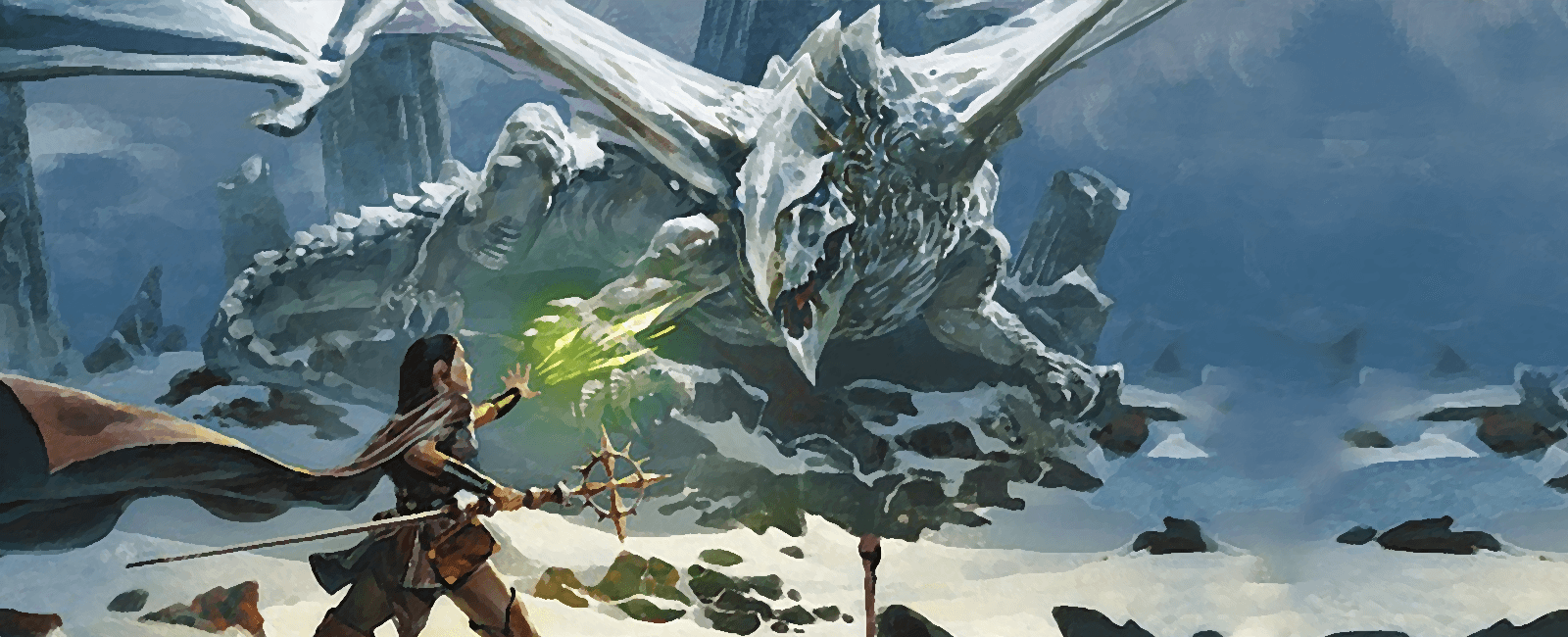White Dragon
White dragons, also known as ice dragons or frost wyrms, are the weakest, smallest, and most feral of the chromatic dragon. Out of all dragon species, the white dragons are the least numerous on Edora.
Basic Information
Anatomy
White dragons are physically the smallest of the chromatic dragons, even smaller than the extinct black dragons. Their scales are shaded from white to grey and ice-blue, an appearance that served as good camouflage in snowy or arctic environments.
White dragons can be distinguished by several features: their heads and necks blend seamlessly into one another, and their wings appear somewhat frayed along the edges. They have a flap of skin, called a dewlap, lined with spines beneath their chins. Their heads are very streamlined, and they have high crests atop their skulls. They have a crisp, vaguely chemical odor.
White dragon toes are spaced more widely than those of other dragons, with barbed claws to aid movement on ice. Their very thin eyelids prevent snowblindness when observing arctic landscapes.
Growth Rate & Stages
When in the stage of being a wyrmling, white dragons have a less pronounced crest and small stubs where their future horns would be. They completely lack the dewlap and their bodies are protected by a leathery white hide in place of scales.
Ecology and Habitats
Adult white dragons have several abilities well suited to their arctic habitat: they can climb ice cliffs with ease, fly very high at extreme speeds, and are exceptional swimmers. They love to swim in cold water, the more frigid the better.
Most white dragons lair in ice caves, often dug into the side of an arctic mountain, tundra, or glacial plains. They do not need ice and snow to survive, and some have settled near mountain peaks or even in borel forests. While they prefer to dwell in existing structures and caves, they are also capable of creating their own caves with their breath to tightly pack snow, transforming it into solid ice.
Their lairs often contain many more tunnels and chambers than those of other chromatic dragons. More powerful white dragons would sometimes turn a large iceberg into a floating lair. Such lairs whould often have an underwater entrance as well as one to the open air.
Dietary Needs and Habits
Much of their diet consisted of large large mammals and aquatic creatures, even whales. White dragons are in constant hunger, and their hunting methods tend to become more savage as they mature.
Civilization and Culture
Common Customs, Traditions and Rituals
White dragons are powerful enough to overwhelm most mortals and have an exceptional long-term memories. Being the smallest and weakest of dragons, many known whites have been noticed to harbor inferiority complexes. They take any opportunity to bully beings such as goliaths, small giants and and even younger dragons of other species. White dragons prefer to scavenge for and collect treasure and food on their own rather than involving themselves in politics as other dragons might. They would often fly from their dwelings to the north oceans for weeks, and would kill any intuder they find upon their return.
They prefer glittery treasure that resemble ice such as diamonds or bright blue gems, but platinum, silver, and anything that is reflective or a polished work of art can also serve as substitute.
Current Date: 2nd of Latsum, 1572
Genetic Ancestor(s)
Lifespan
Geographic Distribution
Related Ethnicities




Comments